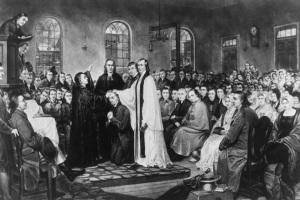Forget Student Loans, If You Can Solve This Math Problem You'll be a Millionaire

The American Mathematical Society (AMS) announced on Monday that the prize for solving a number theory problem known as the "Beal Conjecture" has been increased to $1 million.
The prize and conjecture are named in honor of D. Andrew "Andy" Beal, a Dallas banker with a strong interest in number theory. He also funds the Beal prize according to a news release posted on the AMS website.
To solve Beal's Conjecture, contenders for the $1 million must prove that Ax + By = Cz, when A, B, C, are positive integers, and x, y, and z are positive integers greater than 2. A, B and C must also have a common factor.
Beal, a self-taught mathematician with an interest in number theory first introduced the conjecture in 1993 while he was working on Fermat's Last Theorem
He explained that he increased the incentive to solve the conjecture because he wants to inspire young mathematicians.
"I was inspired by the prize offered for proving Fermat," said Beal of his own experience with number theory. "I'd like to inspire young people to pursue math and science. Increasing the prize is a good way to draw attention to mathematics generally and the Beal Conjecture specifically. I hope many more young people will find themselves drawn into the wonderful world of mathematics," he said.
According to the release, the Beal Conjecture implies, like Fermat's Last Theorem, that there are no solutions to the equation an + bn = cn where a, b, and c are positive integers and n is a positive integer greater than 2.
Pierre de Fermat claimed he had a proof of the theorem more than 300 years ago, but did not leave any record of it. Andrew Wiles and Richard Taylor eventually proved the theorem in the 1990s.
Like Fermat's Last Theorem and many other statements in number theory, the Beal Conjecture is "easy to say, but extremely difficult to prove," according to the release.
Beal first established a prize for a solution to the Beal Conjecture in 1997. To date, however, no correct solution to the problem has been found. The current funding is a significant increase on the $100,000 that previously funded the prize. Funds for the prize are held in trust by the AMS.
In order to get the Beal Prize, proposals for a solution must be published in a referred mathematics publication which is respected.
"In the opinion of the prize committee (selected by the AMS), (it also) maintains the highest editorial standards. In the case of a counterexample, it will be subject to independent verification," notes the release.
After two years the prize committee will decide if a proposed solution is worthy of detailed evaluation.
For more, visit the AMS.





























